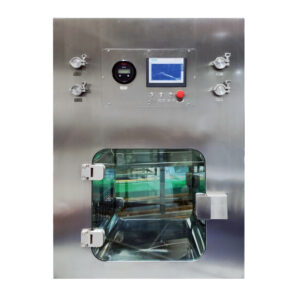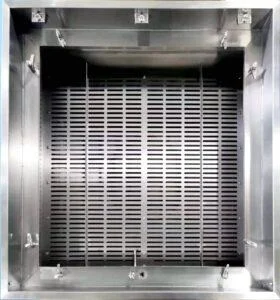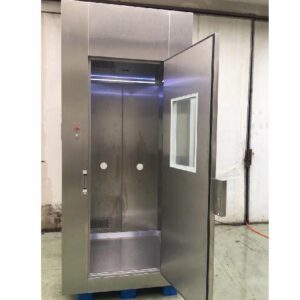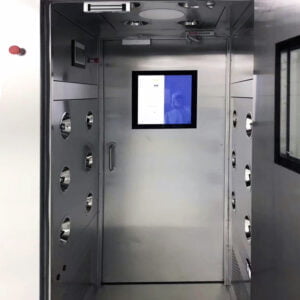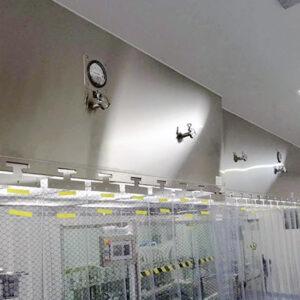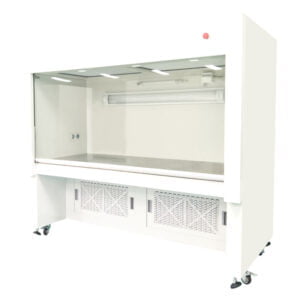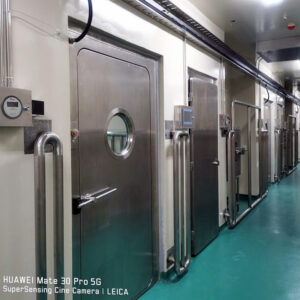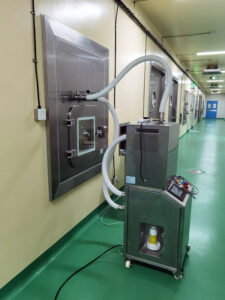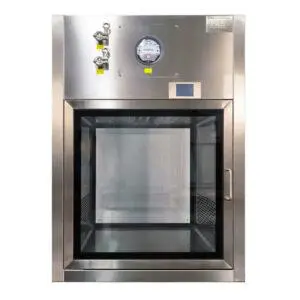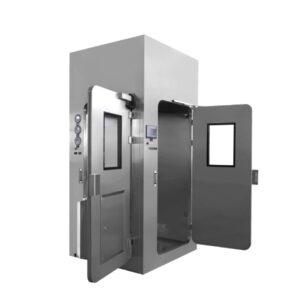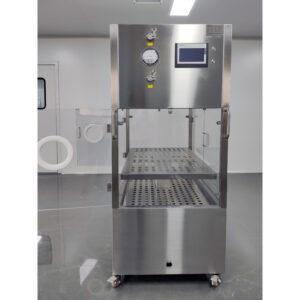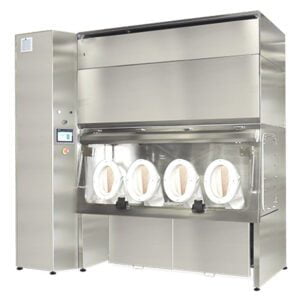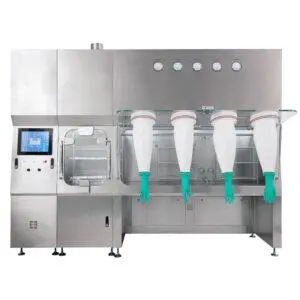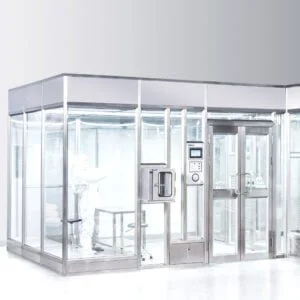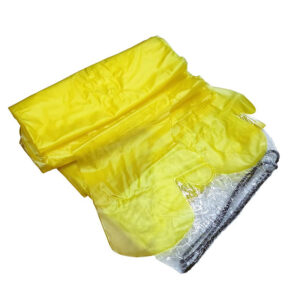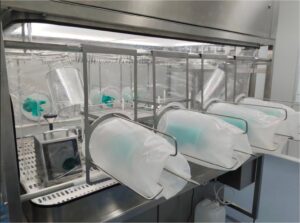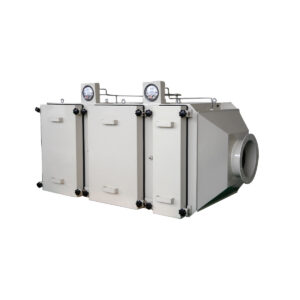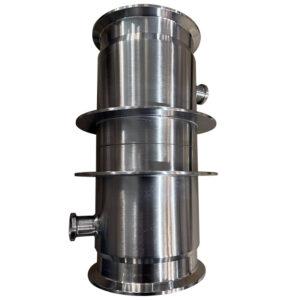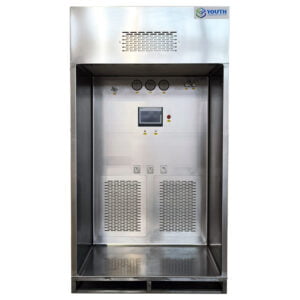Bag-in-bag-out (BIBO) systems are critical containment tools in pharmaceutical manufacturing, nuclear facilities, and high-containment laboratories. When these systems fail, operations halt, schedules slip, and regulatory questions arise. This troubleshooting guide addresses the most frequent failure modes encountered during commissioning, qualification, and routine operation of BIBO filtration systems.
Scope Note: This guidance supports engineering planning and does not replace site-specific SOPs, risk assessments, or regulatory requirements. Critical parameters must be confirmed through approved qualification protocols.
Pre-Installation Planning
Layout and Access Requirements
The majority of BIBO troubleshooting issues stem from inadequate planning during the design phase. Minimum service clearances should include front working clearance ≥ 1.5 m, side clearance ≥ 0.6 m, and overhead clearance ≥ 0.6 m for bag manipulation and tool access. Waste egress aisle width must be ≥ 1.2 m without crossing cleaner grades.
Case Note: During a 2023 pharmaceutical project in Germany, inadequate overhead clearance prevented proper bag manipulation during qualification. The 0.4 m clearance required facility modifications, delaying validation by six weeks. Post-modification airflow verification confirmed design parameters were maintained.
Utilities and Power Quality
Power quality directly impacts BIBO system reliability. Harmonic distortion can cause erratic control behavior, particularly in VFD-driven fan systems. Power quality should be verified through measurement; if harmonic distortion impacts controls, specify isolation or filtering and re-test according to manufacturer specifications.
Essential utility requirements include:
- Dedicated electrical circuits with isolation transformers where specified
- Compressed air quality per ISA-7.0.01 standards for pneumatic actuators
- Seal heater power circuits with ground fault protection
- Emergency power connections for life safety systems
Waste Handling and Changeout Planning
Filter changeout frequency calculations must account for actual loading conditions, not theoretical design values. Document waste classification, packaging requirements, and disposal pathways during design. Many facilities underestimate the volume and classification of spent filter waste, leading to storage and disposal bottlenecks.
Installation and Commissioning Issues
Structural Support and Sealing
BIBO housing support must be verified with safety factor ≥ 1.5, including dynamic loads from fan operation and filter loading. Gasket continuity requires visual inspection and functional testing before system startup.
Common sealing failures include:
- Inadequate gasket compression due to warped sealing surfaces
- Incorrect gasket material selection for temperature cycling
- Damaged sealing surfaces from improper handling during installation
Ductwork Integration and Test Ports
Leak-tight duct connections are essential for maintaining housing negative pressure. Duct fabrication and leakage testing should follow SMACNA/ASHRAE practices unless welded, zero-leak construction is specified. Test ports must be installed upstream and downstream for PAO/DEHS testing and differential pressure measurement.
Critical Specification: BIBO housing static pressure typically maintains -250 to -500 Pa to ensure inward leakage. Actual setpoints must be validated against specific unit design and airflow requirements.
Controls and BMS Integration
Control system integration requires comprehensive IO verification and functional testing. Essential monitoring points include:
- Housing static pressure with alarm setpoints
- Upstream/downstream HEPA differential pressure
- Room differential pressure (typically 10–30 Pa between cleaner and less clean areas)
- Fan/VFD status and damper positions
- Door/port interlocks and bag-change mode permissives
Control system changes are managed per GAMP guidance for category and impact assessment, with documented IQ/OQ evidence retained.
Performance Optimization and Diagnostics
Pressure Control Troubleshooting
Housing pressure instability is the most common BIBO operational issue. Root causes typically include:
- Inadequate control loop tuning
- Undersized or oversized dampers
- Ductwork leakage exceeding design assumptions
- Interference between room pressure control and BIBO housing control
Diagnostic Approach: Measure actual airflow rates and compare to design values. HEPA filter differential pressure for clean filters typically ranges 250–450 Pa at rated flow, with end-of-life threshold often 600–1000 Pa. Set pre-alarm at 80–90% of end-of-life value.
Airflow Verification and Balance
Room and housing pressure must remain within setpoints across varying load conditions. Airflow should be within design ± 10% unless otherwise justified through risk assessment. Use calibrated instruments with ISO 17025–traceable calibration certificates.
Filter Performance and Leak Testing
Leak testing shall be performed per installed filter scan methods referenced in ISO 14644-3 and EN 1822 for the specified HEPA grade. H13 filters require ≥ 99.95% efficiency at MPPS, while H14 filters require ≥ 99.995% efficiency.
Testing Protocol: Conduct upstream aerosol challenge with downstream scanning using photometers calibrated for the specific test aerosol. Document scan speed, probe distance, and acceptance criteria before testing begins.
Common Operational Failures
Seal System Malfunctions
Gel seal and pneumatic seal systems require specific troubleshooting approaches:
Gel Seal Issues:
- Insufficient gel volume or degraded gel consistency
- Heater element failure preventing proper gel fluidity
- Temperature sensor drift affecting control accuracy
Pneumatic Seal Issues:
- Air quality problems causing actuator malfunction
- Pressure regulator drift affecting seal force
- Membrane or O-ring degradation in actuators
Interlock System Failures
Safety interlock failures can prevent normal operation or create unsafe conditions. Verify interlock logic through witnessed testing:
- Door position switches and magnetic locks
- Pressure differential alarms and fan shutdown sequences
- Fire alarm integration and emergency ventilation modes
- Manual override functions and key switches
Acceptance Criteria Checklist
Mechanical Verification
- [ ] Support capacity verified with safety factor ≥ 1.5
- [ ] Gasket continuity confirmed through visual and functional testing
- [ ] Duct connections leak-tight per specified class
- [ ] Access clearances meet minimum requirements
Electrical and Controls
- [ ] IO check completed with witnessed verification
- [ ] Alarm logic tested including latching and reset functions
- [ ] Safe state operation confirmed during power loss simulation
- [ ] Event logging functional with time-stamped records
Performance Testing
- [ ] Housing pressure within -250 to -500 Pa range (or per design)
- [ ] Room pressure differential 10–30 Pa (or per design)
- [ ] Airflow rates within design ± 10%
- [ ] HEPA efficiency meets H13/H14 specification
Operational Readiness
- [ ] Bag-in/bag-out procedure successfully demonstrated
- [ ] Operators demonstrate competency on SOPs
- [ ] Spare parts staged per maintenance plan
- [ ] Documentation package complete for qualification
Maintenance and Reliability
Preventive Maintenance Cadence
Monthly Tasks:
- Functional checks of seal heaters and actuators
- Interlock system verification
- Visual inspection of gaskets and sealing surfaces
Quarterly Tasks:
- Dry-run bag change with non-contaminated filters
- Pressure sensor calibration verification
- Control logic backup and documentation review
Annual Tasks:
- Complete calibration of instrumentation
- Comprehensive interlock testing
- Filter loading assessment and changeout planning
Spare Parts Strategy
Critical spare parts should include seal system components, pressure sensors, and control system modules. Lead times for specialized components can exceed 12 weeks, particularly for custom-configured systems.
Frequently Asked Questions
Q: What causes BIBO housing pressure to fluctuate during operation?
A: Typical causes include control loop instability, ductwork leakage, or interference from room pressure control systems. Verify control tuning parameters and measure actual leakage rates against design assumptions.
Q: How often should HEPA filters be replaced in BIBO systems?
A: Replacement intervals depend on loading conditions and differential pressure trends. Monitor differential pressure continuously; replace when approaching 80–90% of end-of-life threshold or per validated maintenance procedures.
Q: What documentation is required for pharmaceutical BIBO qualification?
A: IQ/OQ protocols following GAMP 5 guidance, including equipment specifications, calibration certificates, functional test results, and operator training records. Maintain change control documentation for any modifications.
Q: Can BIBO systems operate during power outages?
A: Emergency power connections may be required for life safety functions. Fail-safe operation should be validated during commissioning, with documented safe shutdown procedures for extended power loss.
Compliance and Regulatory Considerations
BIBO systems in pharmaceutical manufacturing must meet GMP requirements including contamination control, qualification documentation, and data integrity standards. EU GMP Annex 1 provides specific guidance for sterile manufacturing environments.
Validation protocols should demonstrate consistent performance under worst-case conditions, including maximum filter loading and minimum airflow scenarios. Change control procedures must address both hardware modifications and software updates to control systems.
Regular performance verification ensures continued compliance with validated parameters. Trending of key performance indicators helps predict maintenance requirements and prevents unexpected failures during critical operations.
When properly planned, installed, and maintained, BIBO systems provide reliable containment for high-risk manufacturing processes. Success depends on thorough understanding of system requirements, proper installation practices, and disciplined maintenance execution. Each troubleshooting scenario provides learning opportunities that improve overall system reliability and operational confidence.
Related Contents:
- Bag-In/Bag-Out (BIBO) Systems: Operation and Maintenance Guide
- HEPA Housing Boxes in Pharmaceutical Manufacturing: Uses
- BIBO Filter Housing | Design Principles & Components
- Understanding BIBO | Hazardous Material Containment
- Bag In Bag Out Systems | Safety Fundamentals Explained
- BIBO Pressure Control: Maintaining Safe Environments
- The Intricate World of BIBO Filter Housing
- BIBO System Basics | Bag In Bag Out Filter Principles
- Safe Chemical Handling with BIBO Systems


